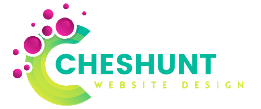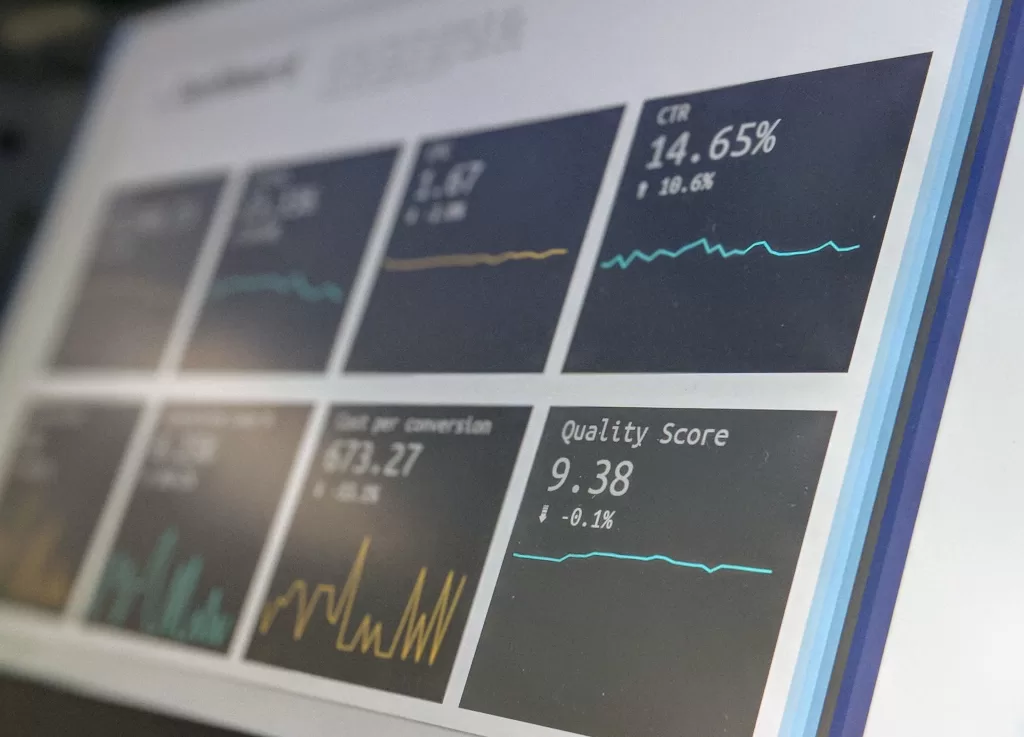On-page SEO is a crucial process for improving the visibility and performance of UK websites. It involves optimizing various elements of a webpage to enhance its ranking in search engines. This includes optimizing written content, images, and HTML tags. On-page SEO is especially important for local businesses as it allows them to have more control over their website’s visibility in search results. By conducting regular on-page SEO optimizations and keeping up with changing trends, businesses can stay ahead of their competitors. Key factors that contribute to on-page SEO include content, keywords, header tags, blogs, and HTML tags.
Key Takeaways:
- On-page SEO is crucial for improving website visibility and performance.
- Optimizing content, keywords, header tags, blogs, and HTML tags is essential for on-page SEO.
- Local businesses can benefit greatly from on-page SEO for geographical targeting.
- Regular on-page SEO optimizations help businesses stay ahead of competitors in online marketing.
- Utilizing Google My Business and local citations can boost local SEO for UK websites.
Understanding On-Page SEO
On-page SEO, also known as on-site SEO, refers to the process of optimizing individual web pages to improve their ranking in search engines. It involves various techniques such as optimizing written content, images, and HTML tags. By making manual changes to webpage elements, businesses can improve their website’s ranking and attract more visitors.
The goal of on-page SEO is to enhance the visibility and relevance of a webpage, ultimately driving more organic traffic. This organic optimization is crucial for website ranking and can significantly impact a website’s visibility in search engine results.
One of the key aspects of on-page SEO is optimizing written content. This includes creating high-quality, relevant, and engaging content that is optimized for specific keywords. By conducting thorough keyword research, businesses can identify the most impactful keywords to incorporate into their content, thereby increasing their chances of ranking higher in search results.
Images are another essential element of on-page SEO. Optimizing images involves using descriptive file names and adding relevant alt text. This alt text not only helps search engines understand the content of an image but also improves accessibility for visually impaired users. Additionally, image optimization includes compressing image sizes to ensure faster page loading times.
HTML tags play a critical role in on-page SEO. This includes using header tags (H1, H2, H3) to structure and organize content. These header tags not only assist search engines in understanding the hierarchy and relevance of content but also improve readability for users.
Implementing these on-page SEO techniques can positively affect a website’s ranking and improve its visibility. By focusing on optimizing written content, images, and HTML tags, businesses can achieve higher organic rankings, attract more relevant traffic, and enhance their overall online presence.
| Elements | Description |
|---|---|
| Content | High-quality, relevant, and optimized written content |
| Keywords | Relevant keywords incorporated into the content |
| Header Tags | Organized and structured content using header tags (H1, H2, H3) |
| Images | Optimized images with descriptive file names and alt text |
| HTML Tags | Optimized HTML tags for improved search engine understanding and user readability |
Key Elements of On-Page SEO
The success of on-page SEO relies on optimizing key elements of a webpage. These elements include content, keywords, header tags, blogs, and HTML tags.
Content is a fundamental element that influences both on-page SEO and user engagement. By conducting keyword research and using a variety of tools, businesses can identify relevant keywords to incorporate into their content. High-quality, informative, and engaging content not only attracts users but also helps improve search engine visibility.
Keywords play a vital role in on-page SEO. By strategically placing relevant keywords throughout the content, businesses can signal to search engines what the webpage is about. However, it’s important not to overuse keywords or engage in keyword stuffing, as this can have a negative impact on the website’s ranking.
Header tags, such as H1, H2, and H3, play a crucial role in organizing content and improving user experience. These tags help break up the content into sections, making it easier for search engines and users to navigate through the webpage. They also provide an opportunity to incorporate keywords and signal the importance of different sections.
Blogs are an effective way to create engaging and valuable content that attracts visitors to a website. By regularly publishing informative blog posts, businesses can establish themselves as industry experts and drive more organic traffic to their website. Blogs also provide an opportunity to target specific keywords and provide internal linking opportunities.
HTML tags such as title tags and meta descriptions contribute to on-page SEO by providing concise information about the webpage to search engines and users. The title tag is displayed as the clickable headline on search engine results pages and should accurately reflect the content of the webpage. Meta descriptions, on the other hand, provide a brief summary of the webpage’s content and encourage users to click through.
The Importance of On-Page SEO for UK Websites
Optimizing various on-page SEO elements is crucial for improving the performance of UK websites. These elements include the page URL, title tag, meta description, headers, image alt text, and internal linking.
The page URL plays a significant role in search engine optimization. It should be short, user-friendly, and contain relevant keywords that accurately describe the webpage’s content. A well-optimized page URL helps search engines and users understand what the webpage is about.
The title tag is another critical element of on-page SEO. It should provide a concise and accurate description of the webpage, incorporating the main keyword. A compelling title tag not only helps search engines understand the content but also attracts users to click through to the webpage.
Meta descriptions are brief summaries that appear in search engine results. They should be compelling and relevant to the landing page, enticing users to click and visit the website. A well-crafted meta description can significantly impact the click-through rate of a webpage.
Headers, such as H1, H2, and H3, help organize the content on a webpage. They make it easier for both search engines and users to navigate and understand the structure of the content. By strategically using header tags, businesses can enhance the readability and SEO-friendliness of their webpages.
Image alt text provides a description of images for search engines and users with visual impairments. Optimizing image alt text with relevant keywords helps search engines understand the context of the images, improving the overall SEO of the webpage.
Internal linking refers to the practice of linking different pages within a website. It helps search engines and users navigate through the website and discover relevant content. Strategic internal linking improves user experience and encourages users to spend more time on the website, leading to higher engagement and improved search engine rankings.
By optimizing these crucial on-page SEO elements, UK websites can enhance their visibility in search engines, attract more relevant traffic, and ultimately achieve better online presence and success.
FAQ
What is on-page SEO?
On-page SEO, also known as on-site SEO, refers to the process of optimizing individual web pages to improve their ranking in search engines. It involves techniques such as optimizing written content, images, and HTML tags.
Why is on-page SEO important?
On-page SEO is important because it enhances the visibility and relevance of a webpage, ultimately driving more organic traffic. By making manual changes to webpage elements, businesses can improve their website’s ranking and attract more visitors.
What are the key elements of on-page SEO?
The key elements of on-page SEO include content, keywords, header tags, blogs, and HTML tags. These elements play a crucial role in increasing a website’s visibility in search engines.
How does content affect on-page SEO?
Content is a fundamental element that influences both on-page SEO and user engagement. By conducting keyword research and using a variety of tools, businesses can identify relevant keywords to incorporate into their content.
What role do header tags play in on-page SEO?
Header tags, such as H1, H2, and H3, help organize the content and make it easier for search engines and users to navigate. By using header tags appropriately, businesses can improve the readability and structure of their webpages.
How do HTML tags contribute to on-page SEO?
HTML tags, such as title tags and meta descriptions, contribute to on-page SEO by providing concise information about the webpage to search engines and users. These tags help search engines understand the context of the webpage and display relevant information in search results.
What is the importance of the page URL in on-page SEO?
The page URL is important in on-page SEO as it should be short, user-friendly, and keyword-rich. A well-optimized page URL can improve the visibility of a website in search engines and make it more accessible to users.
How do headers and image alt text impact on-page SEO?
Headers and image alt text help organize the content and provide descriptions for search engines and users. Headers improve the readability and structure of a webpage, while image alt text assists in providing relevant information to users with visual impairments and search engines.
What is the role of internal linking in on-page SEO?
Internal linking improves user experience and encourages users and search engines to spend more time on the website. By linking related webpages within the website, businesses can guide users towards valuable information and increase the overall visibility of their website.
How can on-page SEO optimize meta descriptions?
To optimize meta descriptions, they should be compelling and relevant to the landing page, encouraging users to click through. Businesses can strategically incorporate keywords and create meta descriptions that accurately summarize the content on the webpage.




